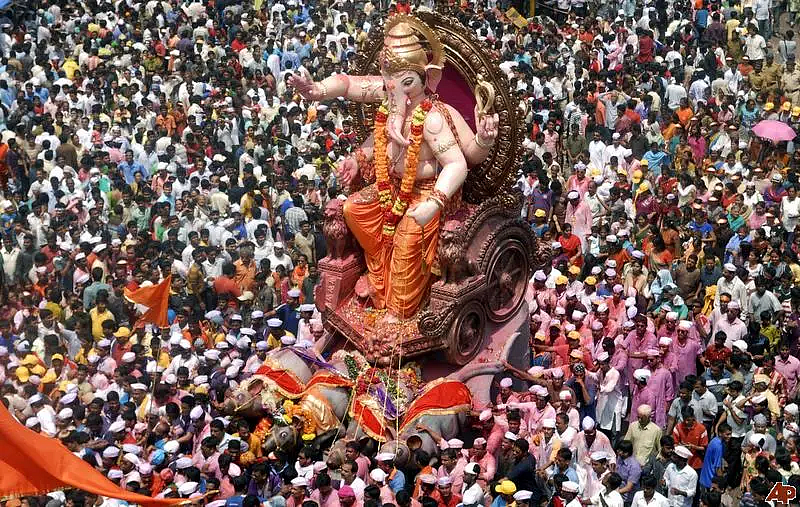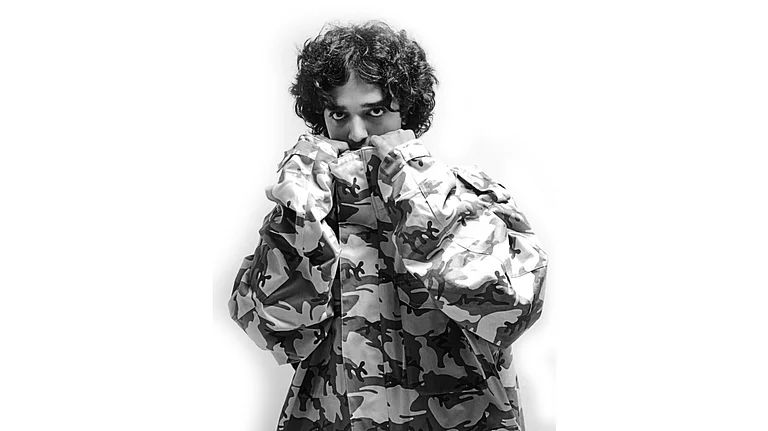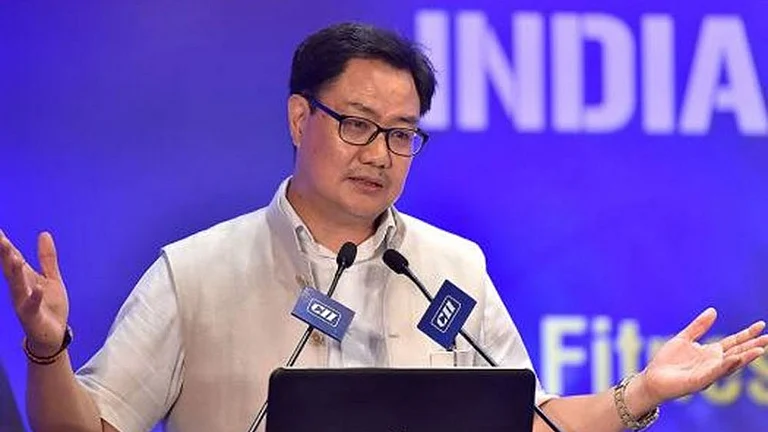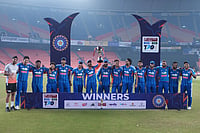Ganpati Bappa Morya! The most-awaited and dearest festival has almost arrived and will be celebrated worldwide on September 7, 2024. The auspicious festival marks the birthday of the Lord Ganesha, the elephant-headed deity and the favourite god of all. It is observed for 10 days by the dedicated devotees who call Bappa heartwarmingly every year to visit their place. Ganesh Chaturthi falls typically in August or September on the Chaturthi tithi of Shukla Paksha and ends on Anant Chaturdashi with the culmination of Ganesh Visarjan on the last day, which is the 10th day. The most beloved Vignaharta is revered as the deity of wisdom, prosperity, and happiness.
Why is Ganesh Chaturthi celebrated?

Lord Ganesha, the remover of obstacles and one who fulfils their devotee's wishes is worshipped with great fervour and joy. Ganesha Chaturthi is commemorated all over the world, but especially the people of Maharashtra, Pune, and Hyderabad celebrate the festival with great enthusiasm and religiosity. People bring the Ganesha idol (made from clay) to their homes and worship it through various rituals and ceremonies. The last day, or Visarjan day, is an emotional day for everyone as devotees with teary eyes bid farewell to Lord Ganesha with the hope that he will come back next year soon.
History and Significance

As mentioned in historical texts like the Rigveda, there is a prominent story of how Lord Ganesha became the first god to worship at the outset of any occasion or ritual. According to legends, Mata Parvati created Lord Ganesha with sandalwood paste and bestowed life upon the idol to guard her while she went to take a bath in Lord Shiva’s absence. When Lord Shiva returned home, he found Ganesha blocking his way, which made Lord Shiva angry, and in fury, he beheaded Ganesha’s head. The incident made Mata Parvati heartbroken, and after seeing Mata Parvati in grief and anger, Lord Shiva promised her to give Ganesha back to life. Lord Shiva managed to find a baby elephant head, replaced Ganesha’s head, and gave him his life back. Lord Shiva named his child Ganpati (Leader of the Ganas).
Ganesh Chaturthi holds a special and significant place in the hearts of people. The homecoming of Bappa is a heartwarming feeling, and people are full of emotion when they bring Bappa home and worship him. Devotees seek the blessing of the beloved elephant-headed deity and pray for good fortune, health, and wisdom.
Why Ganesh Chaturthi is celebrated for 10 days

The 10-day-long celebration of Ganesh Chaturthi symbolises the journey of Lord Ganesh from mountain Kailash to earth, where he is believed to come to earth only to bless his devotees during the celebration. The devotee brings Lord Ganesha to their home with open arms. The 10-day ritual marks the grand installation of Bappa’s idol in homes or puja pandals in public places, followed by elaborate rituals, Vedic mantras, and Pranpratishtha invoking the deity’s presence into the idol.
The devotees are filled with offerings, prayers, and cultural performances from the second to the ninth day. Devotees who want to make Bappa happy offer modak, flowers, coconuts, etc. as a symbol of devotion. The day ends with the Visarjan, which means immersion of Lord Ganesha’s idol in waterbodies, representing the cycle of creation and dissolution in the universe. The 10 days represent Lord Ganesha’s birth and his journey back to his mother Parvati.
Bal Gangadhar Tilak: Who started the tradition of worshipping Bappa

Ganesh Chaturthi dates back to the 17th century in the Maratha empire when Chhatrapati Shivaji Maharaj celebrated it to encourage nationalism and solidarity among his subjects. The Indian freedom fighter Lokmanya Bal Gangadhar Tilak, who hails from Maharashtra, started the tradition of worshipping Lord Ganesha in 1893 in the public sphere, as he believes Bappa removes all obstacles. Also, he motivated people to come together to celebrate this Ganesh Utsav.
The motive for organizing this festival is to build a sense of patriotism and unite people. The mass gathering also becomes a platform for political discourse and the promotion of the freedom movement. Tilak used the festival as a platform to promote Indian nationalism and unite people against British colonial rule. By making Ganesh Chaturthi a public celebration, Tilak helped to revitalize the festival and transform it into a significant cultural event.
Importance of Visarjana
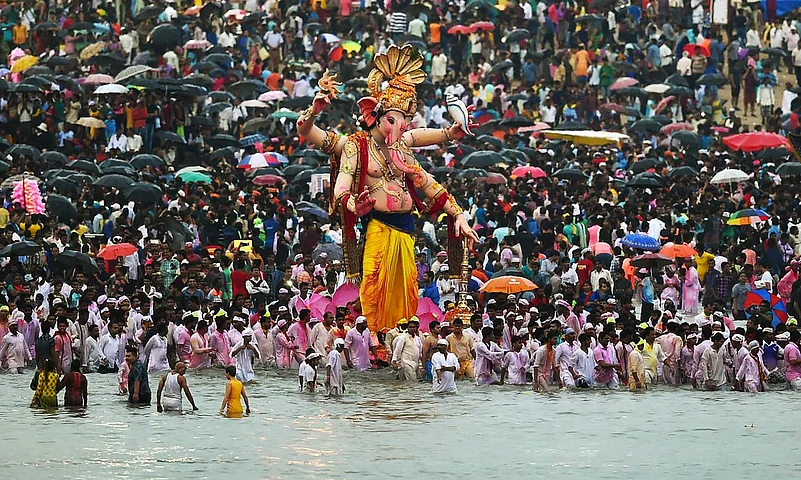
Visarjana (the immersion of the Lord Ganesh idol in the waterbody) is the day when we have to bid farewell to Lord Ganesha with a teary eye, expecting he will come sooner next year. Well, keeping Ganesha's idol at home is all about attachment and love towards him. When we say Ganpati Bappa Morya Pudhcya Varshi Lavkar Ya” (Ganpati, please come early next year), we are at the peak of emotion; it feels like our loved ones are leaving us. Ganesh Chaturthi culminates after the immersion of the Ganesha idol in a water body. The ritual signifies Ganesha's return to his celestial abode, taking away all the misfortunes of the devotees. The ritual signifies birth and death and teaches us nothing is permanent in this life; everything is temporary. The immersion also reinforces the belief in the cyclical nature of existence and the importance of letting go of attachments. Visarjana ritual also teaches us we should focus on spiritual and inner peace and not on this materialistic world.
Conclusion:
Ganesh Chaturthi unites people, symbolizes cultural identity, and is one of the most renowned festivals celebrated worldwide. Bappa is the most beloved god of all, and this is why he is worshipped and welcomed with whole hearts. This Ganesh Chaturthi seeks the blessing of Lord Ganesha, who is also known as Ekdanta, Vikat, Lambodar, Gajanana, etc., for the prosperous year ahead. Devotees bring Lord Ganesha home and perform the rituals; offer him modak, his favourites; and sing, dance, and enjoy the occasion with full hearts to invoke his grace and blessings.
Happy Ganesh Chaturthi!







